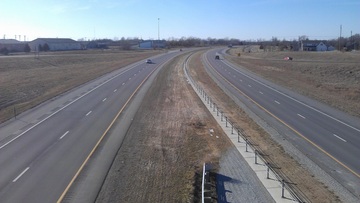 A view overlooking Kansas Highway 10 through my town. Give them something they can relate to in real life, right? Well, quadratic functions have numerous applications (most noteably Dan Meyer's basketball shot example using the 3-Act structure) but some are a stretch of the imagination for most algebra students. I don't think I knocked one out of the park on this activity, by any means, but it definitely had students engaged and talking. To elaborate on the picture at the left, our town is working on a grant application through the Kansas Department of Transportation to install a pedestrian bridge over Kansas Highway 10 and seeking community support for the project. You'll understand why this pedestrian bridge relates to the lesson shortly, I swear.
 My 2-year old daughter & TI-Nspire CX. I used the TI-Nspire CX handhelds available to my classroom and was able to import pictures of objects that stressed the properties of quadratic functions in standard, vertex, and intercept forms each with a different context that I felt emphasized the form students were focusing on. (The .tns file for the activity can be downloaded HERE) Standard formThe y = a*x^2 + b*x + c form (yes, this post is letting me see how little formatting I can do with text on my blog), is where our focus began in our quadratics unit. I related this form to the path seen in Angry Birds (shown in the screenshot album below) since the path of the previous shot was visible on screen. I set up sliders to allow students to modify values of a, b, and c and watched them try to map the previous shot they saw. Some comments I heard: - "Dude, you gotta change c so it's your y-intercept to put the bird in the slingshot!"
- "Yeah, a has to be negative so it's concave down, but make it barely negative so the graph gets wider! Duh!"
- "Whoa, changing the value of b only swivels the graph from side-to-side!" (this was important as we worked later in the unit to factor quadratics)
Most importantly, students were able to connect each constant (a, b, and c) to its unique impact on the shape of the graph, on their own terms--I just used Angry Birds to facilitate the process. The students carried their momentum into Vertex form next. Vertex formThe y = a*(x - h)^2 + k form, where the vertex is located at (h, k) was a fitting place for me to use Dan Meyer's basketball shot example , because students thus far were struggling with the idea of why symmetry was important in quadratics. They had already aced the idea of wider/narrower graphs and how that was critical to the graph's shape, but I used this to emphasize how each point on one side of the vertex also "secretly" corresponded to another point on the opposite side of the vertex. Intercept formThe y = a * (x - p) * (x - q) form that is shown many different ways in many different textbooks. This was going to be the grand finale, bringing in the pedestrian bridge project I'd mentioned earlier (the public information presentation can be found HERE, if you want to know more). I included an example photo of a pedestrian bridge in our state (over Kansas Highway 61 in Hutchinson) and students fit the graph by noting the x-intercepts on the scale that was overlaid on the photo. (Side note: they could also manually enter a value for the constants, they did not need to manually adjust values as small as shown). Several students also asked about why the towers at each side of the pedestrian bridge had to be so tall, which led us into a side discussion about height clearance and its importance to road traffic that would travel beneath (a decent review of inequalities).
So, as I was arriving at school the day after doing this lesson, the school secretary told me how cool it was to hear about my lesson at the Site Council meeting the night before. Apparently, my principal talked up the lesson during the public informational meeting THAT night in front of city administrator and some other city staff involved in the project, as well as numerous citizens in attendance. So, I received a couple emails that next day from several people expressing their thanks for having beefed up support for the project while also teaching the concept of the bridge in class. It's fun to have those "I wish my math teacher did things the way you do" moments, with the idea that parents who were at that meeting probably gave their students a pop quiz when they got home without my prompting. Sorry about that, kids. I'd mentioned a link for the TI-Nspire activity earlier, but HERE it is again if you want to use it or modify it for your own use. Even if you don't have a TI-Nspire handheld, you can give it a test-drive using the TI-Nspire Document Player HERE (open the Doc Player first, then download the activity and open it through the Doc Player interface). --Keltner--
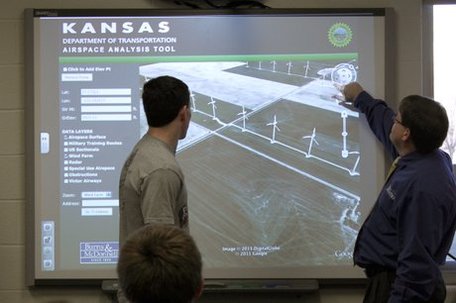 An EHS student and KDOT official interact demonstrate the Airspace Awareness Tool. Here's a conundrum being faced in the state of Kansas: harnessing the state's great potential for wind energy while also safely advocating for aircraft traffic servicing the state's 138 airports and abiding by the siting guidelines for industrial wind turbines. The state of Kansas approved a landmark piece of legislation in 2009, the Kansas Net-Metering and Easy Connection Act, which not only allowed for citizens to connect their energy generators to the grid but also standardized a 1-to-1 buyback policy (they would earn credits from their utility provider at the same rate that they would purchase energy from the same provider). Here's where the math comes into play: industrial wind turbine installations are subjected to a battery of governances before the FAA (Federal Aviation Administration) gets their chance to have a say. Wind farm developers would then submit their site proposal through the FAA's Obstruction Evaluation process. Affected projects would include: - Any construction or alteration exceeding 200 feet above ground level (which requires a lighted beacon to make it visible to aircraft, common on water towers in my area)
- When requested by the FAA (and sometimes as an anticipated last step in the developer's proposal process, which can negate a substantial amount of work, just to have to start from square one because the project might interfere with safe air travel)
- Any construction or alteration located on a public use airport or heliport regardless of height or location
- those located within 20,000; 10,000; or 5,000 feet or public use or military airports at varying height levels depending upon proximity to those airports (THIS is where the lesson focuses, on how to visualize these criteria before the FAA comes a-callin')
These criteria hardly lay out like a list of constraints for linear programming or a system of inequalities, but the logic involved definitely could be used in the same breath as one another. Try some of the requirements in the applicable city ordinance in trying to obtain a wind turbine on our high school campus, as part of the Kansas Wind for Schools program: - Blade-tip clearance, at its lowest point, shall have a ground clearance of not less than 25 feet tall
- Overall height of 60 feet or less to fit Micro-WECS (Wind Energy Conversion Systems) class of devices
- Minimum setback (measured from the closest adjacent lot line or parcel line or above ground public utility) of 110% of the device's overall height [Example: a 50-foot tall turbine would need to have a 55-foot radius clear of it to the nearest property line or easement]
- No buildings within 110% of the device's height where the turbine's collapse could potentially damage another building of the property owner's
- Ensuring that the noise emitted from the wind turbine shall not exceed 50 dbA within 100 feet of the nearest property line, except during short-term events such as utility outages and severe windstorms. [NOTE: The math involved with decibels is a great application to logarithms and how exponential behavior applies to the height-noise relationship in this case]
Do the phrases "not less than", "within", "n feet or less" start looking like the real-world examples we would hope to incorporate when teaching systems of inequalities? This gives students not simply an opportunity to see that our turbine site is a solution to the system of inequalities, but can drive some curiosity as to where else a turbine might be positioned and still satisfy all these criteria. Check the brief video tutorial below on how to use the Airspace Analysis Tool (link to actual site included HERE), a product of the Kansas Department of Transportation Division of Aviation in conjunction with Burns & McDonnell Engineering (Please note links on the User Agreement page that help out with loading the Google Earth Plug-In necessary to use the site. From past experience, this has not been as successful using Safari as it has on Chrome, Fireforx, and Internet Explorer).
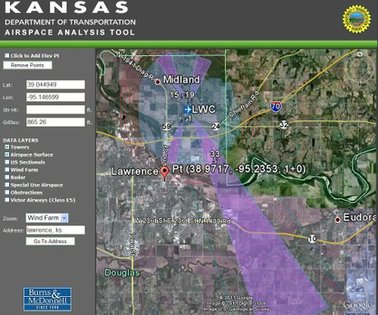 A screenshot from the Airspace Analysis Tool, near Lawrence, Kansas. Now, the fun, behind-the-scenes news about all this: KDOT actually unveiled their Airspace Analysis Tool IN MY CLASSROOM at a press conference hosted on a teacher inservice day (i.e. supposedly no classes in session). Here's the news story from the Lawrence-Journal-World.Their personnel said it would be nice if we could have some students available to play around with the project and give their candid feedback. To their chagrin, I almost needed to bring in more chairs! Thank goodness some of the media on hand chose to stand and work behind their tripods and cameras, to catch the multiple perspectives of KDOT staff and students interacting. Students were anxious to see their project because it touched on a topic they had some curiosity about, and liked the potential to see some engineers in action. To show up at 8 a.m. ON THEIR DAY OFF was a remarkable thing for them to do and made another tally mark in the column for times I've loved my job.
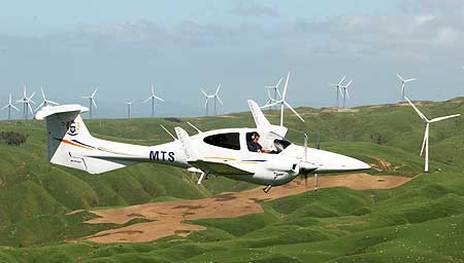 Situation hopefully made safer by the KAAT. Click image for image source link. While students had an opportunity to try out and manipulate the tool during our press conference, they investigated the maps with relative ease because of their awareness of the familiar interface, Google Earth (even mentioned on the Google Earth blog after its release for an innovative use of their software). When the folks with Burns & McDonnell and KDOT asked for feedback on the beta version they released, our students swung for the fences and suggested another visual aspect: avatars. So now, the KAAT includes superimposed images of the device proposed at a location, as well as for existing structures on file. For those in the aviation industry, as well as in the land development and construction industries, this has been a welcome addition. As mobile devices become ever-present around us, this interface very well could find its way being incorporated into the cockpits of aircraft to help with flight instruction feedback in real time. Since its release, the Kansas Airspace Analysis Tool (KAAT) has garnered national attention for its innovative ideas and interface, not simply for helping wind energy developers but also companies and communities who are looking to install water towers or cell/communications towers. Here is part of one announcement I was able to retrieve ( and HERE is a copy of their online newsletter announcing the recognitions), touting the acclaim that the KAAT has received:
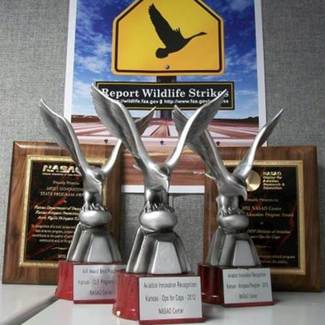 Some of the awards received presented to the KAAT project. - For the first time in the history of the National Association of State Aviation Officials’ Awards, a single state received both the State Most Innovative Program Award and the NASAO Center Outreach and Education Award for two separate programs. The State Most Innovative Program Award was presented to the State of Kansas for the Kansas Airspace Awareness Program - Aeris Vigilis (Airspace Guardian). The NASAO Center Outreach and Education Award was presented to the State of Kansas for its “Ops for Cops” program. The program partnered KDOT, the Transportation Security Administration, Drug Enforcement Administration and airport managers to provide tactical and legal information for law enforcement officials called to airports. Kansas also received a national best practice recognition for its continuing legal education program in partnership with the Kansas Commission on Aerospace Education.
- The KDOT Aviation team received word that the Kansas Airspace Awareness Tool, a major component of the Airspace Awareness Program, will receive the American Association of State Highway and Transportation Officials (AASHTO) President’s Award for Aviation in November. The Tool was recognized in April by the American Council of Engineering Companies with an Engineering Honors Award.
Since the unveiling of the Kansas Airspace Analysis Tool at our school, student have made contact with some of the personnel on hand for this event and gained insight into numerous STEM-related paths that could potentially open other doors for them later. My favorite experience from all of this comes from a comment a student shared with me a few weeks later: "Mr. Keltner, you know those algebra problems with the 'a plane flies with the wind between towns in 2 hours but the return flight takes 3 hours because it's going into the wind?' Well, Mr. Young from KDOT took me up in a plane and let me try the controls for a bit and I looked at my clock and could SEE that problem playing out along our trip as it was happening!"So, I hope you enjoy this potential class project you can utilize. Granted, it is for the state of Kansas, but I think the technology and the ease of integration into class speaks well for student engagement and enjoyment. I know my students have enjoyed it and have bragged to me about being able to put a 2,000-foot tower in their back yard. I guess that goes to show you, the sky is the limit. Only in this case, they can actually SEE it. --Keltner-- One last shout out to the folks at Burns & McDonnell and the Kansas Department of Transportation Division of Aviation, namely Director of Aviation Edward Young who gave our students a wonderful opportunity when he selected our school for the unveiling of his project. Thank you for allowing us to be a part of this project.
|


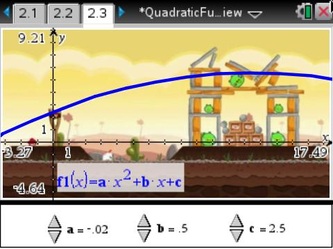
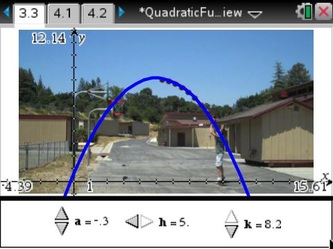
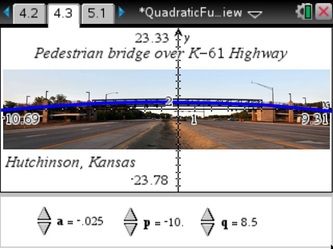
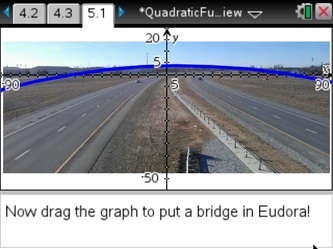
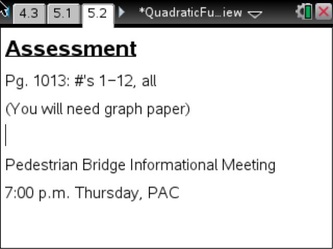




 RSS Feed
RSS Feed